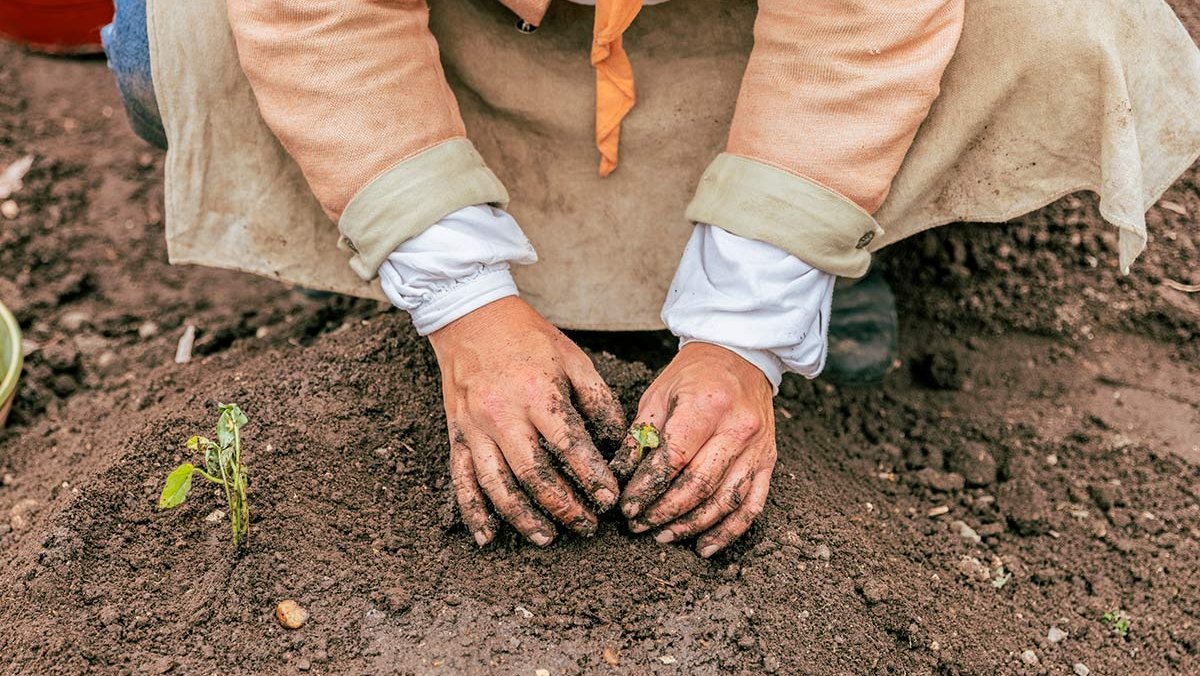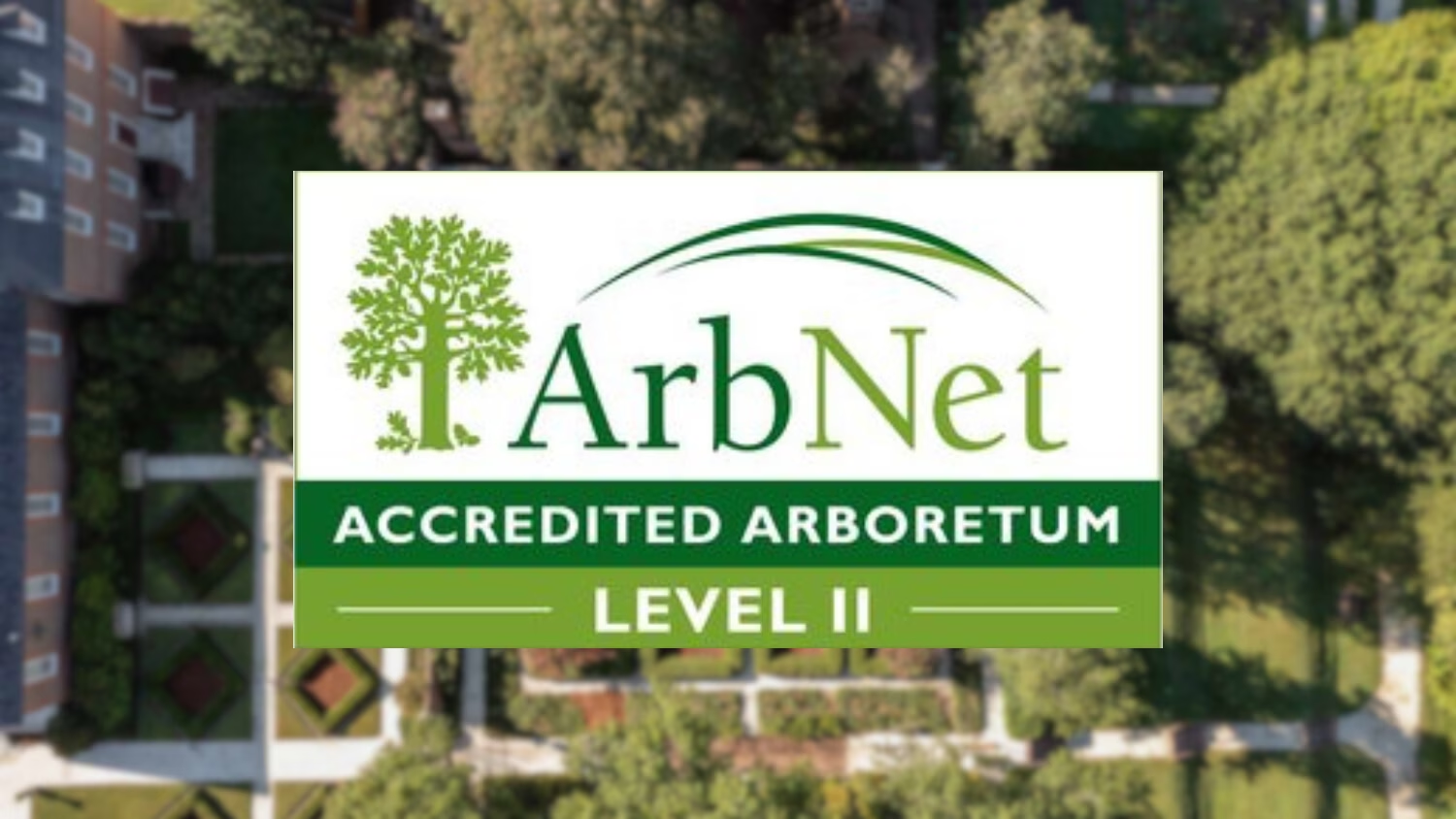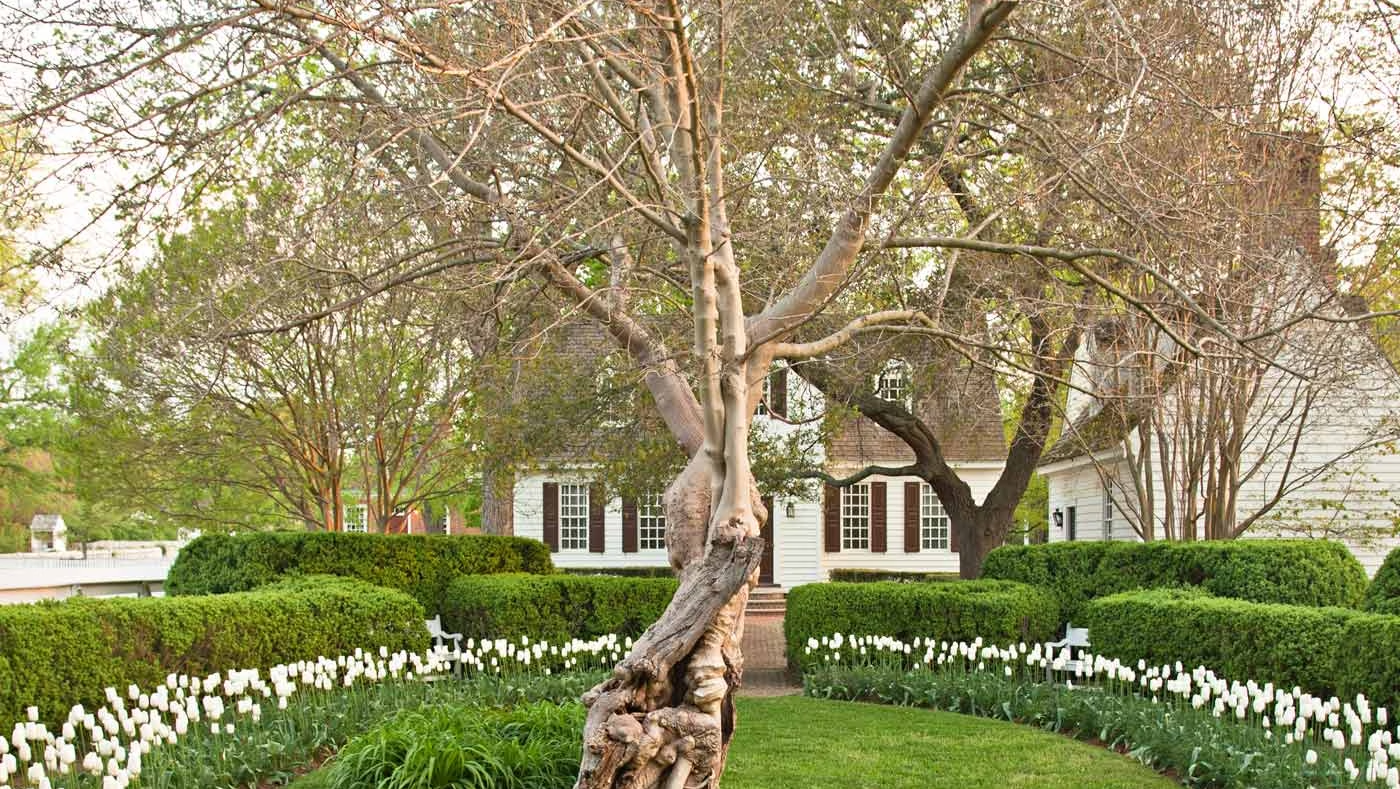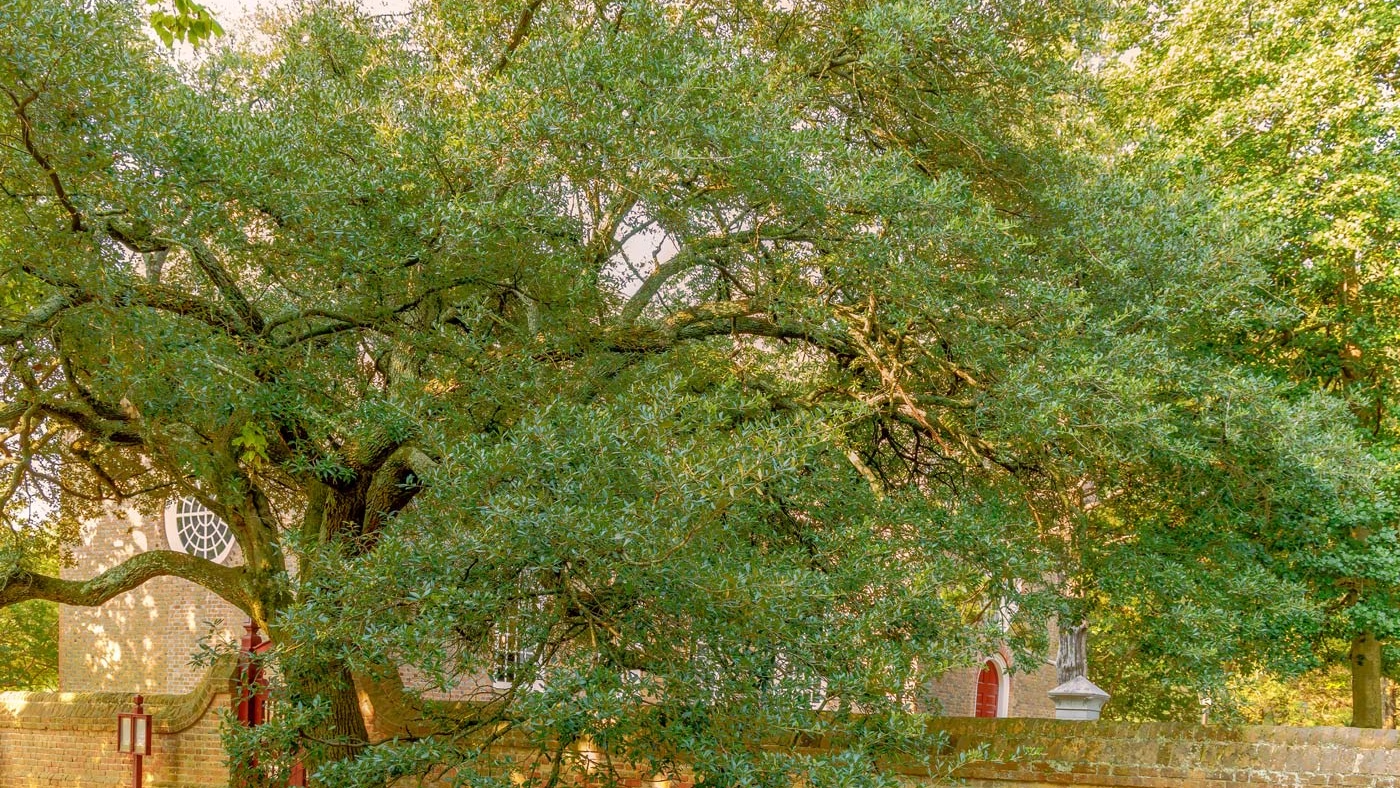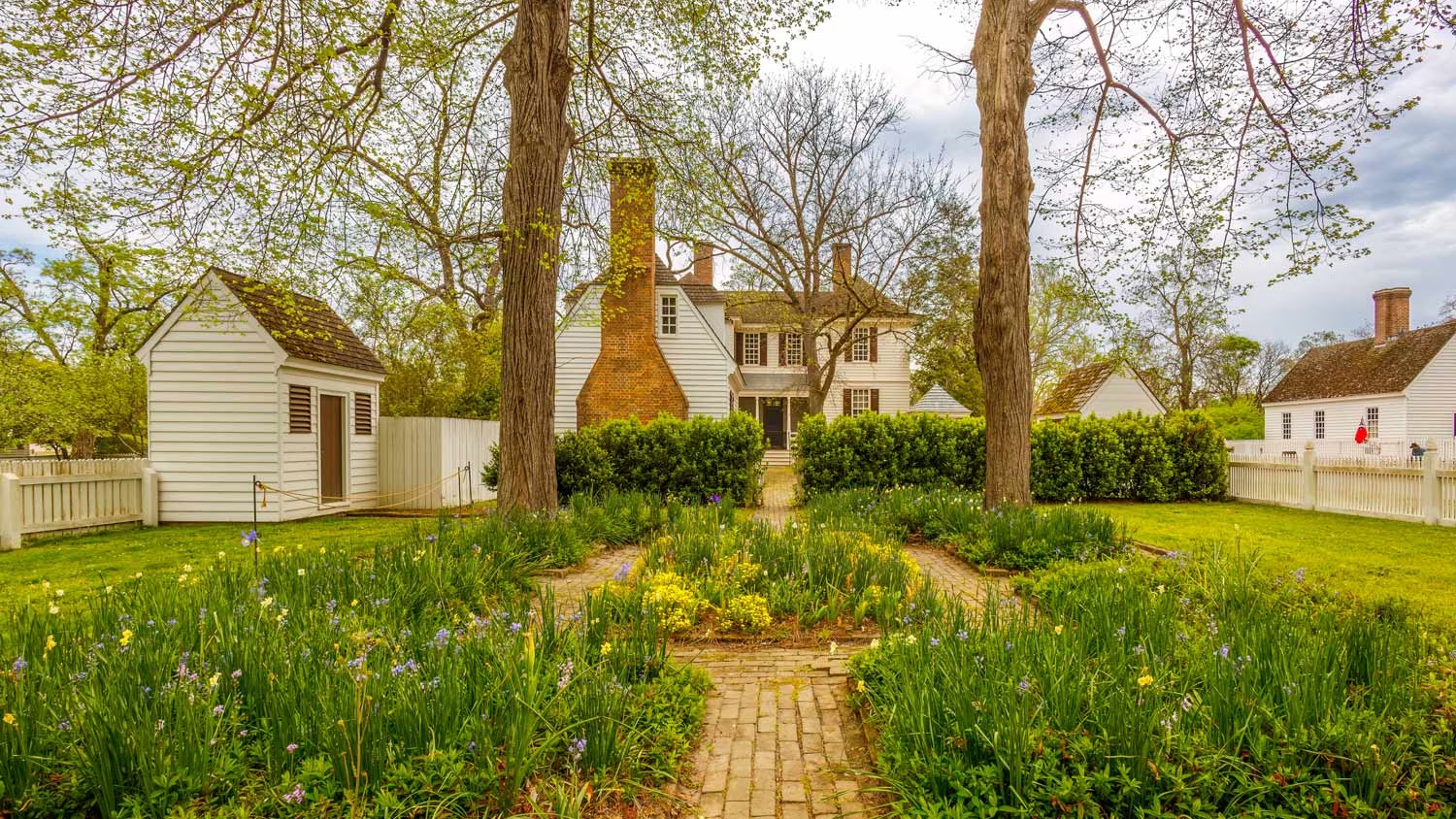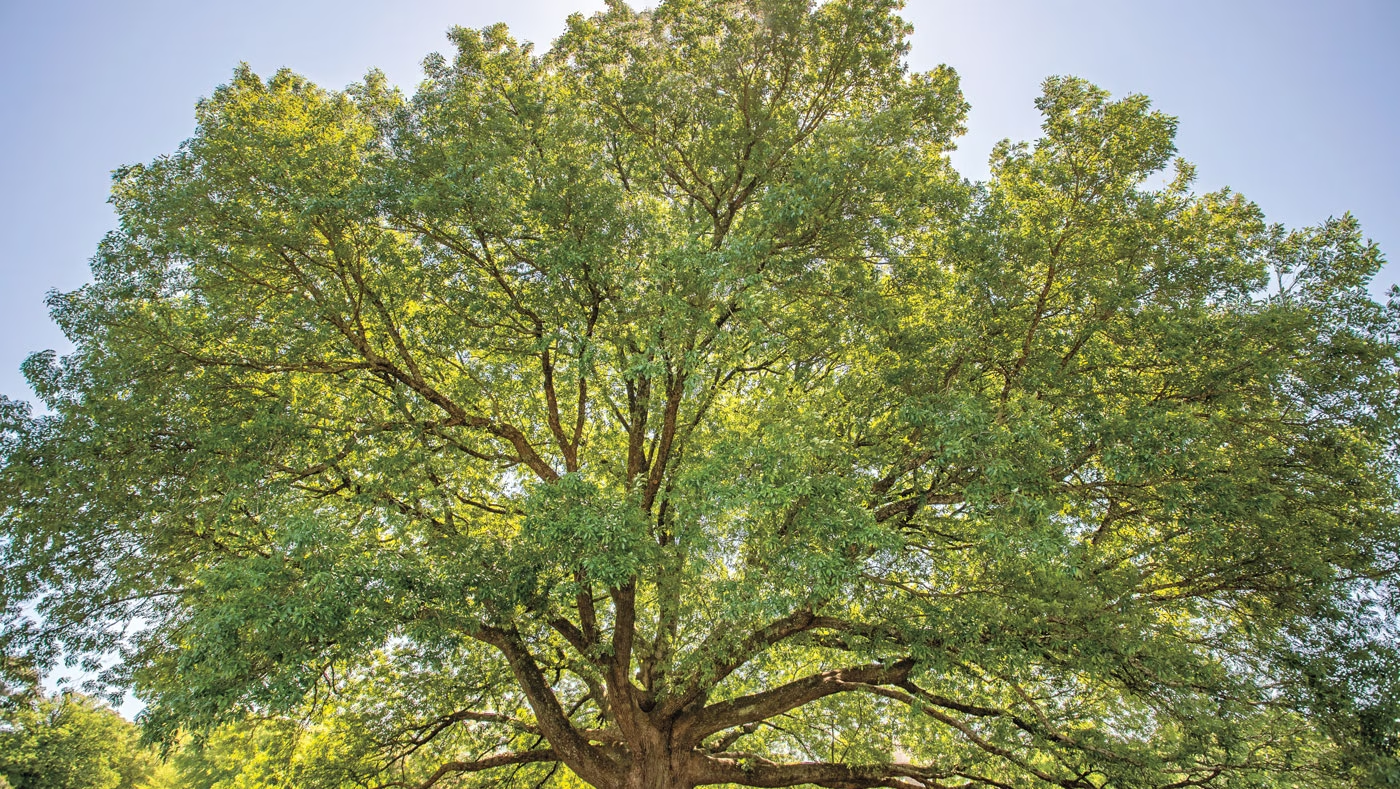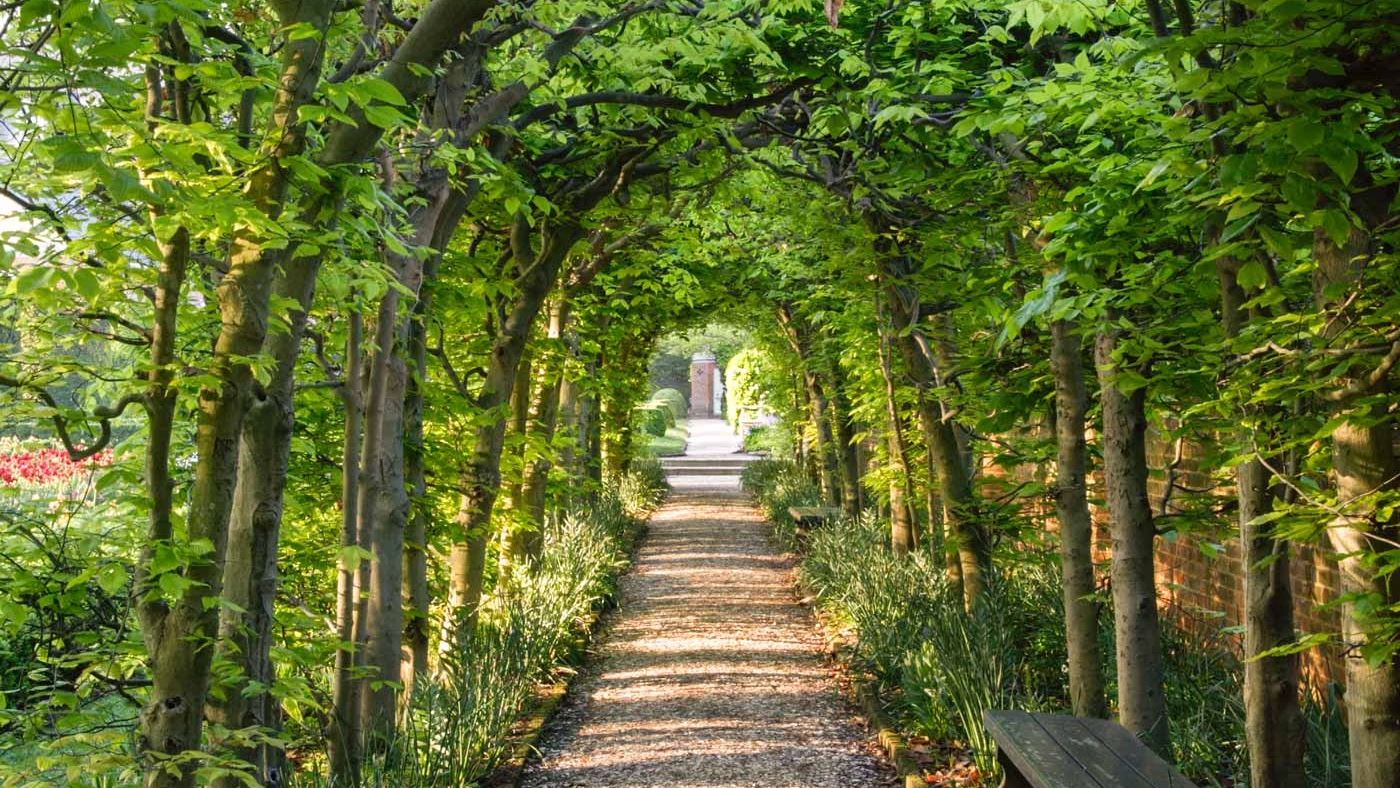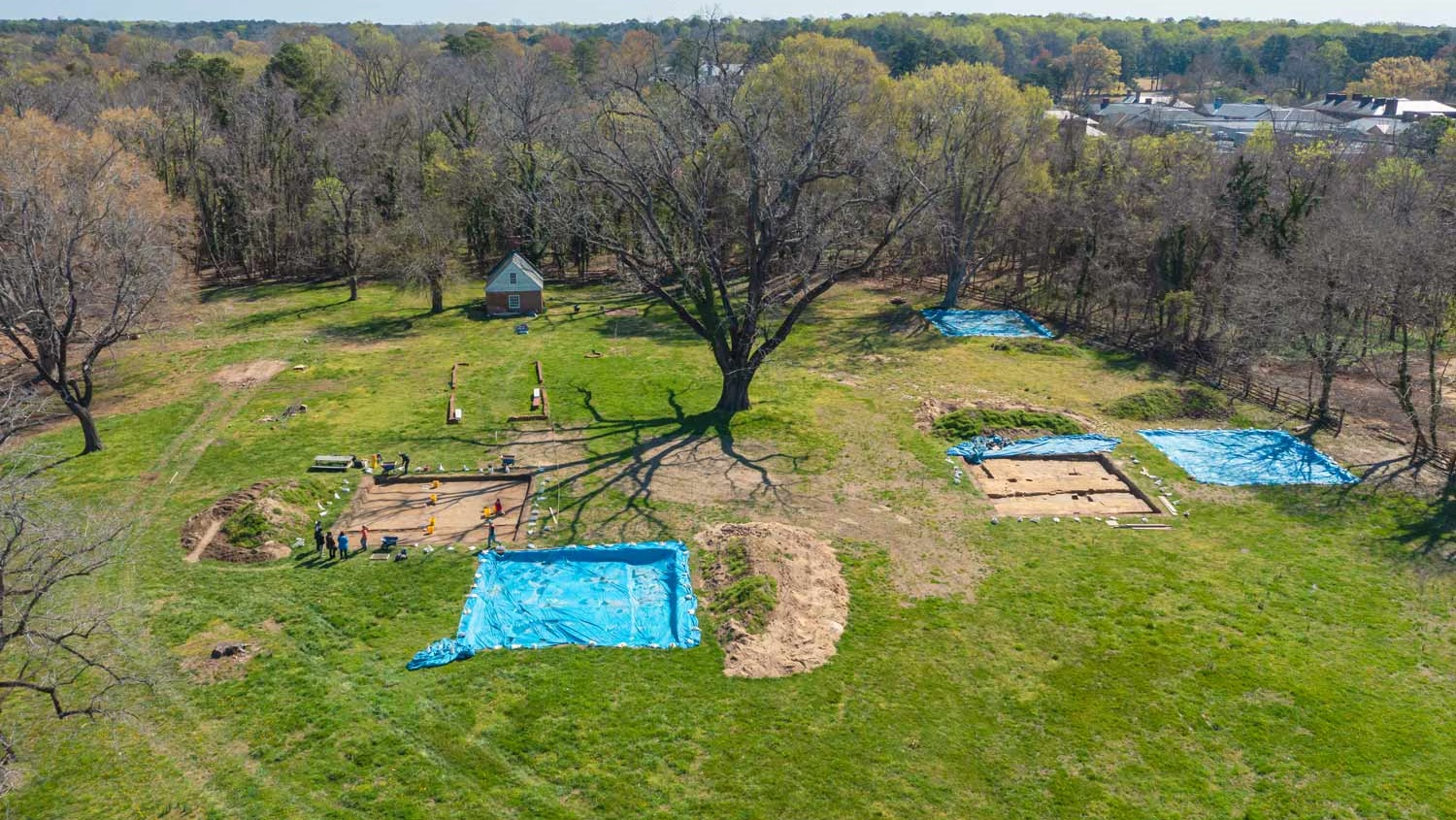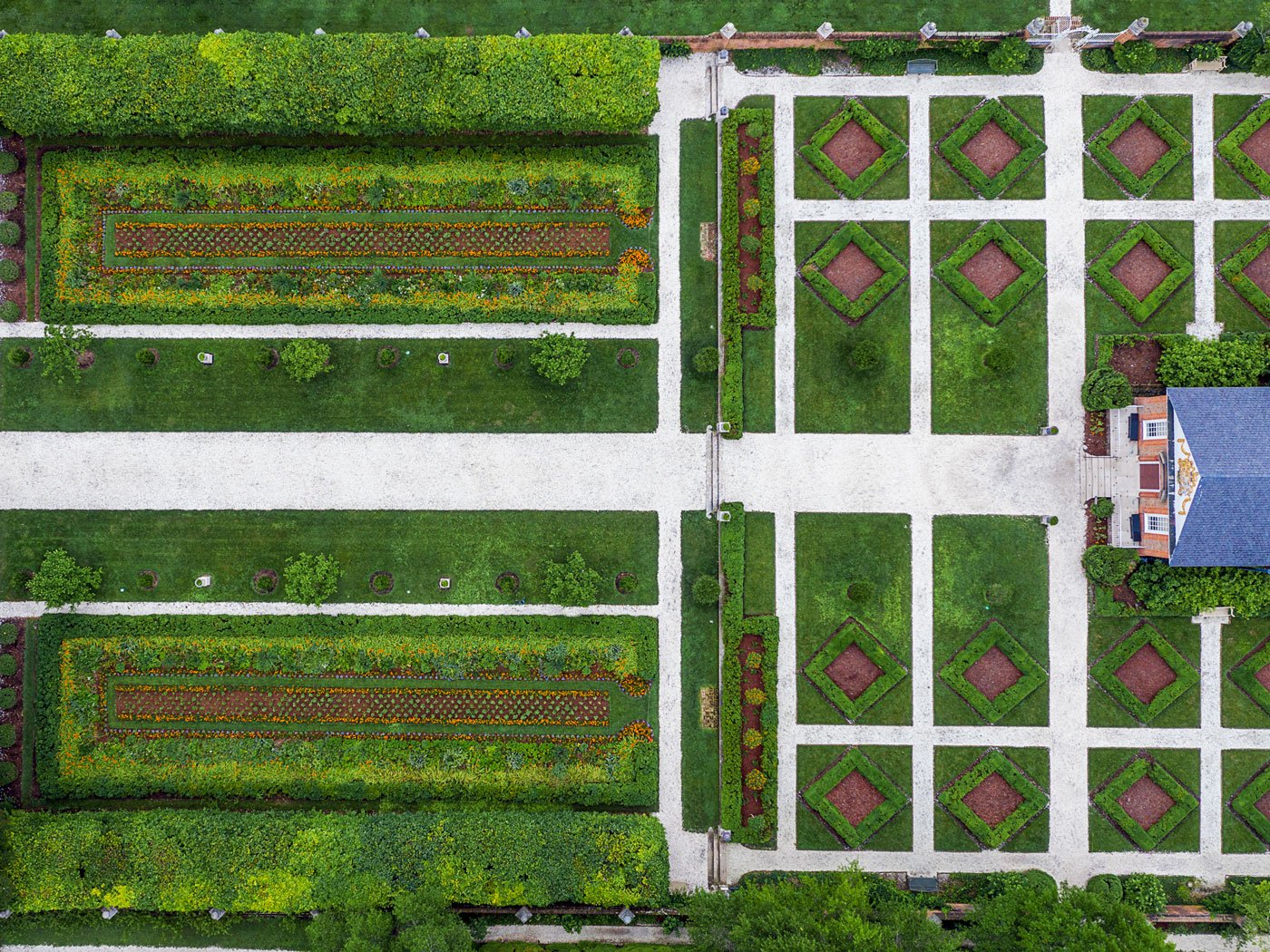
Arboretum & Gardens
History in Bloom
History in Bloom
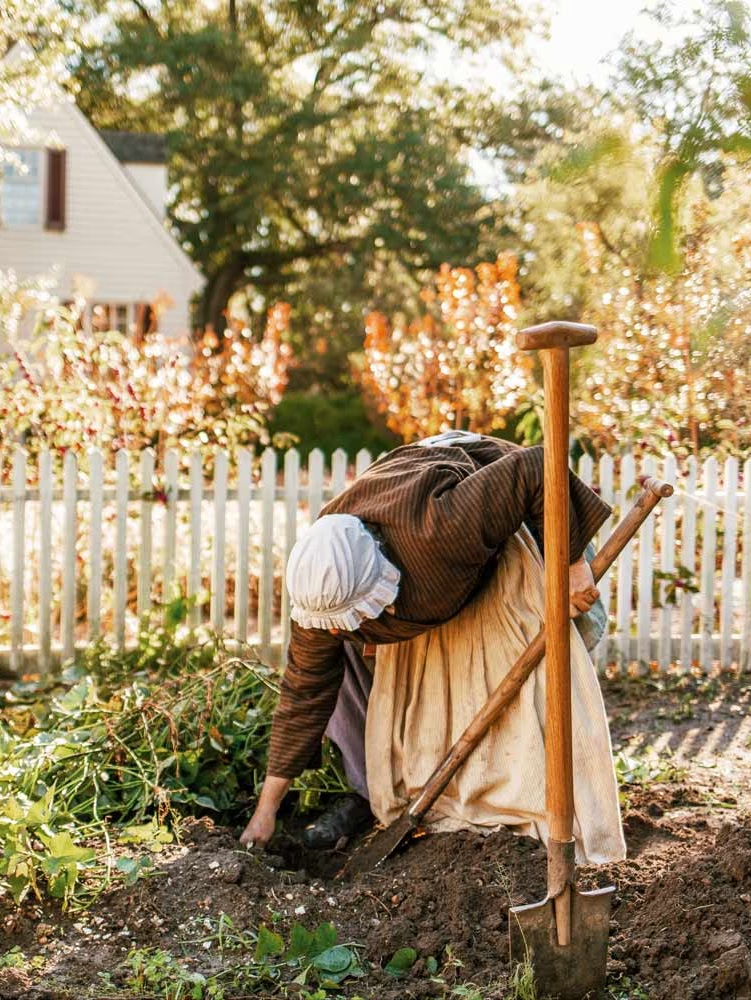
Rooted in History
More than 30 carefully maintained gardens adorn our 301-acre living history museum. From flowering backyard pleasure gardens to our grand Governor’s Palace Gardens and Grounds, these gardens can offer insight into how the colonists lived and worked as a community. Ongoing research and new archaeological techniques continue to improve our understanding of 18th-century Williamsburg gardens, which is reflected in the design and interpretation guests can enjoy and learn from throughout the year.

Branching Out
The Colonial Williamsburg Arboretum is a Level 2 Certified Arboretum comprised of 18th-century tree and woody shrub varieties as well as modern cultivars on our Hotel and Museum properties. The collection features 25 period species of oak trees and more than 30 historic gardens.
Arboretum & Gardens By the Numbers
Trees You'll See
Interactive Map
Resources for Your Visit
Garden Map
Use the Garden Map to identify notable trees and gardens throughout the historic area.
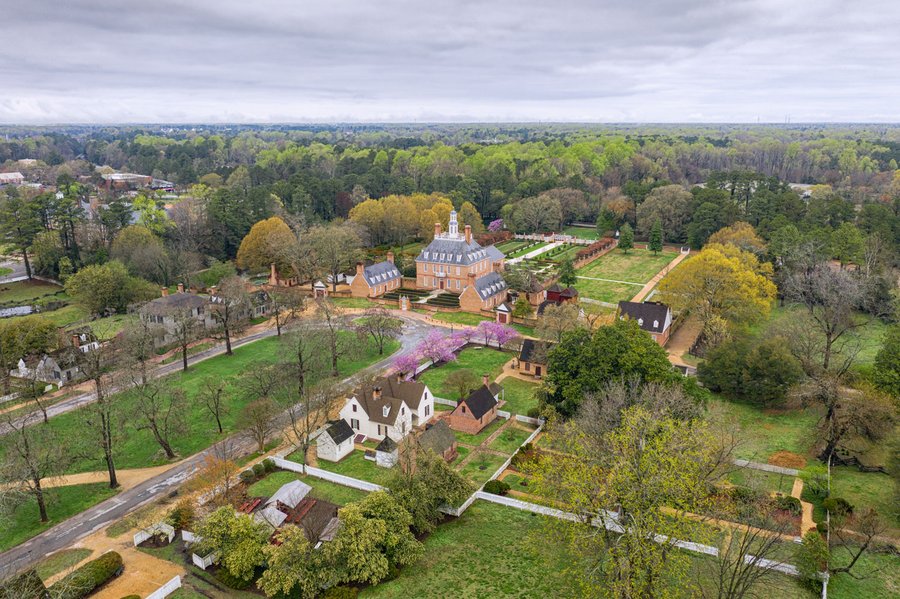
Bassett Trace Nature Trail
Use the Nature Trail Map to identify shrubs, trees, and flowers found throughout the trail.
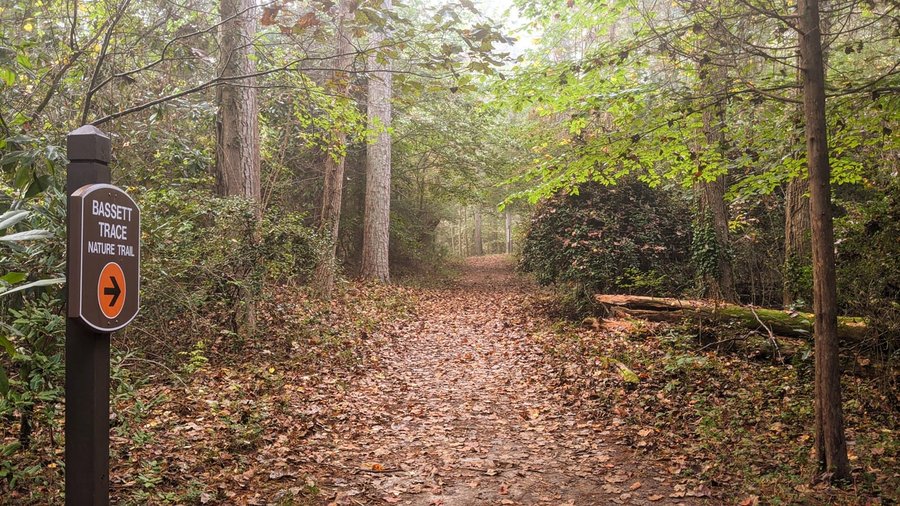
Bassett Trace Trail Map
Download a map of the Bassett Trace Trail System.
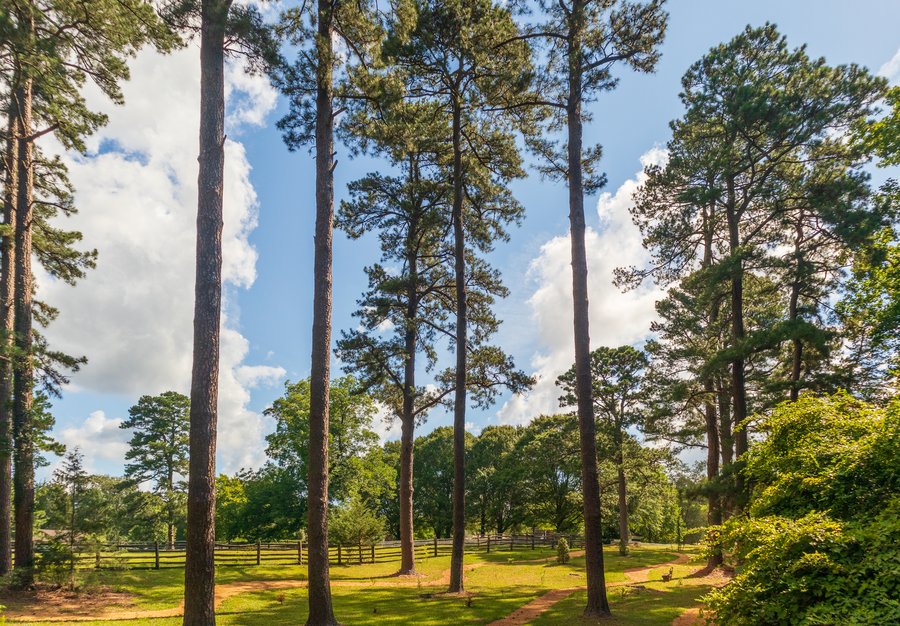
Events Calendar
Explore our arboretums and gardens on your own or join in our tours led by our experts.


Farm to Table Trades
Our farm to table trades work throughout the year to grow food for the community and to prepare the grounds as needed for the seasons to come. Historic cooks work in locations throughout the Historic Area preparing authentic colonial dishes; gardeners grow vegetables, herbs, and flowers, and maintain our Sankofa Heritage Garden and our Three Sisters Gardens; and farmers grows large-scale crops in the farming plot near the windmill.
Gardener
Watch the historic gardeners use 18th-century tools and techniques to grow herbs, vegetables, and decorative flora.
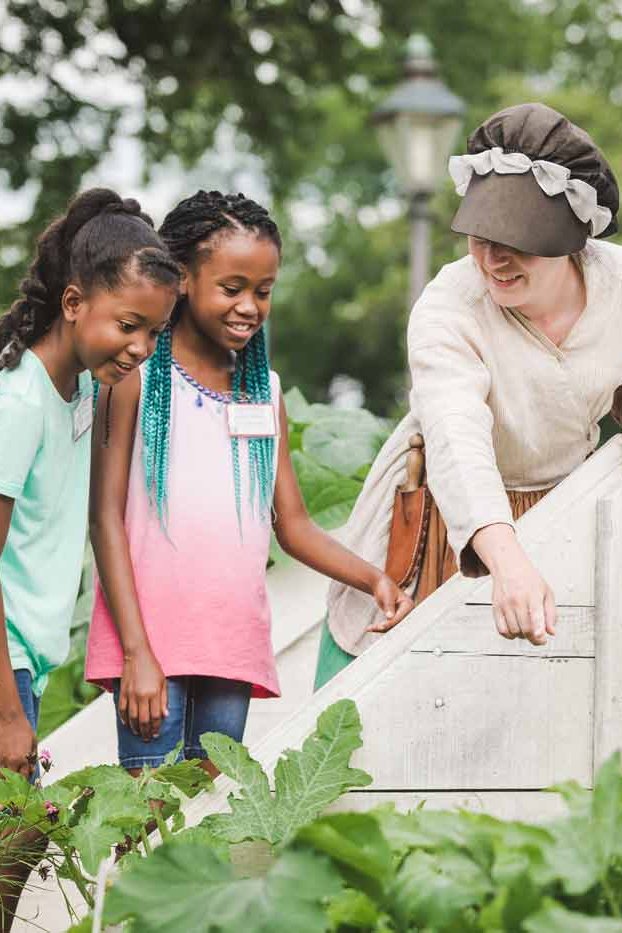
Cook
Watch as cooks prepare historically-accurate dishes.

Farmer
Engage with our farmers as they work throughout the year to grow food for the community.
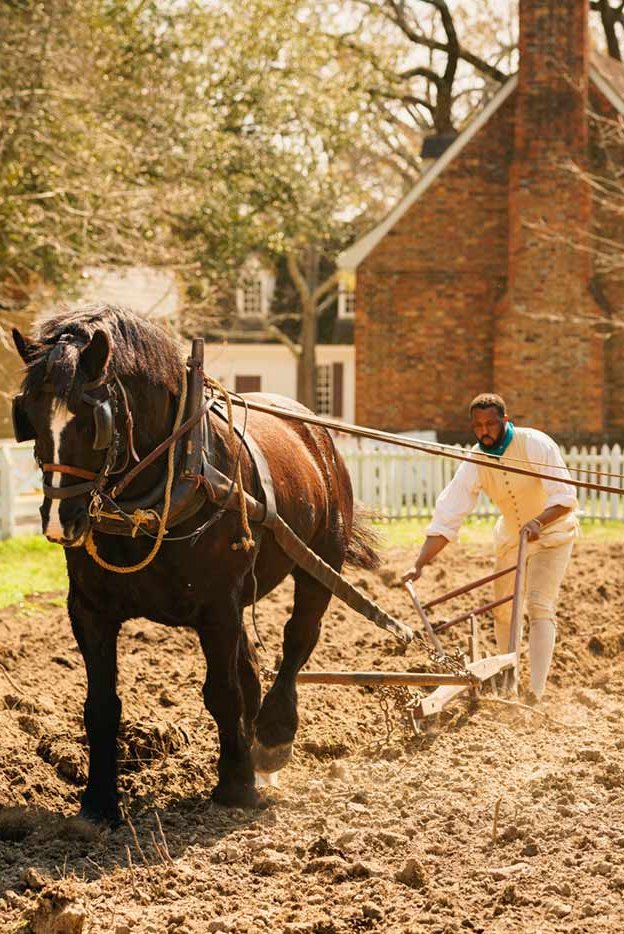
Explore Historic Gardens
Custis Square
Archaeologists are investigating the Williamsburg home of Virginia plantation owner John Custis IV. Shortly after moving to Williamsburg, Custis took up gardening. Over the following years, his garden grew in size and ambition.
Governor’s Palace Gardens
The Palace grounds, including its gardens and evergreen maze, are a beautiful place to spend an afternoon. But they are also an important historic site.
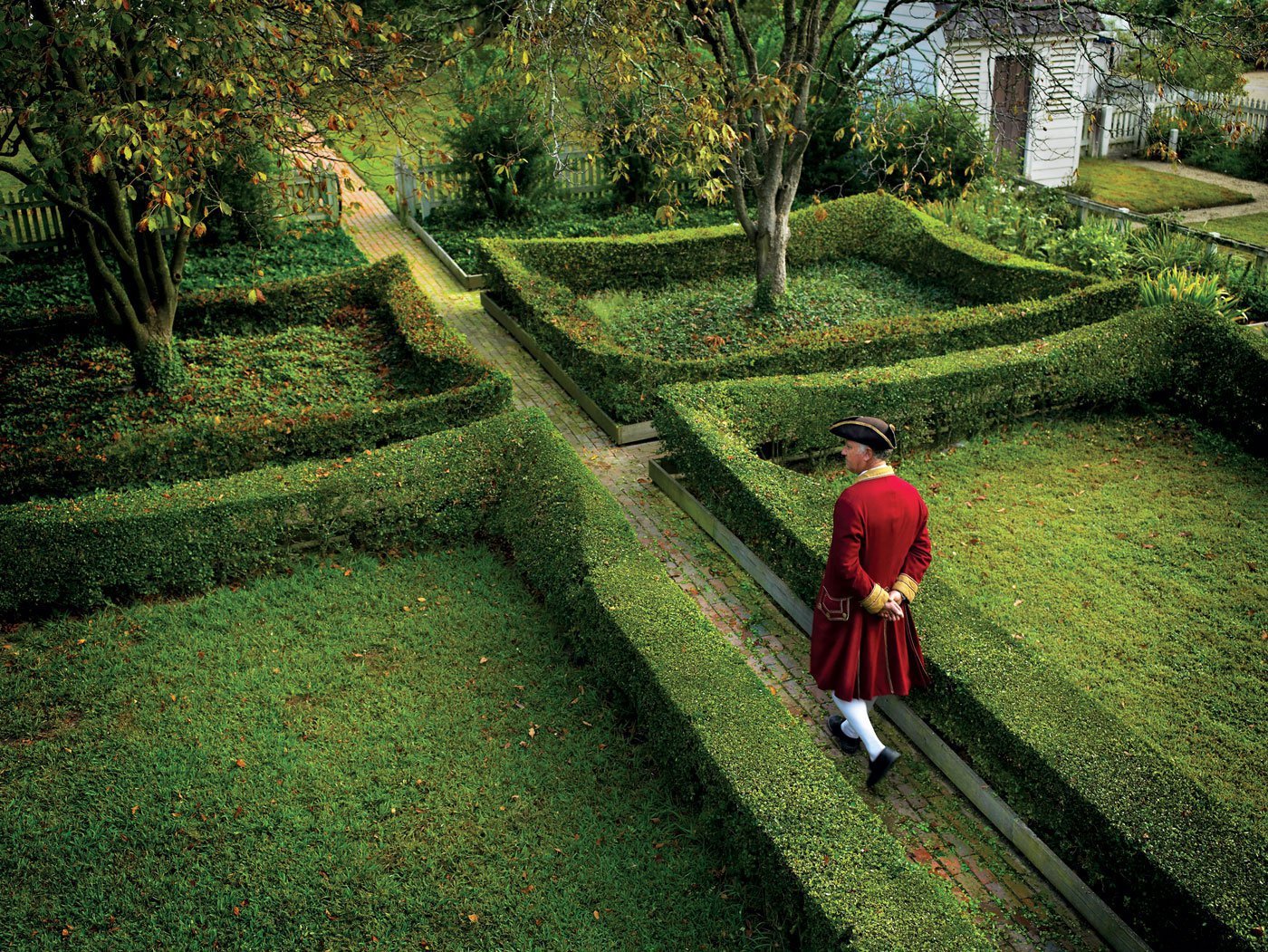
The Gardens of Colonial Williamsburg
Explore the timeline of Williamsburg's gardens, from American Indians to today.
Learn More
Who Were Williamsburg’s Enslaved Gardeners?
Early Williamsburg’s gardens, some of the finest in the colonies, would not have existed without the skill and labor of enslaved people.

Gardening by Moonlight
Learn more about enslaved peoples’ plantation gardens in Virginia

Garden Getaway
These mainstays are part of the Historic Area’s garden geometry — and it’s a beautiful lesson
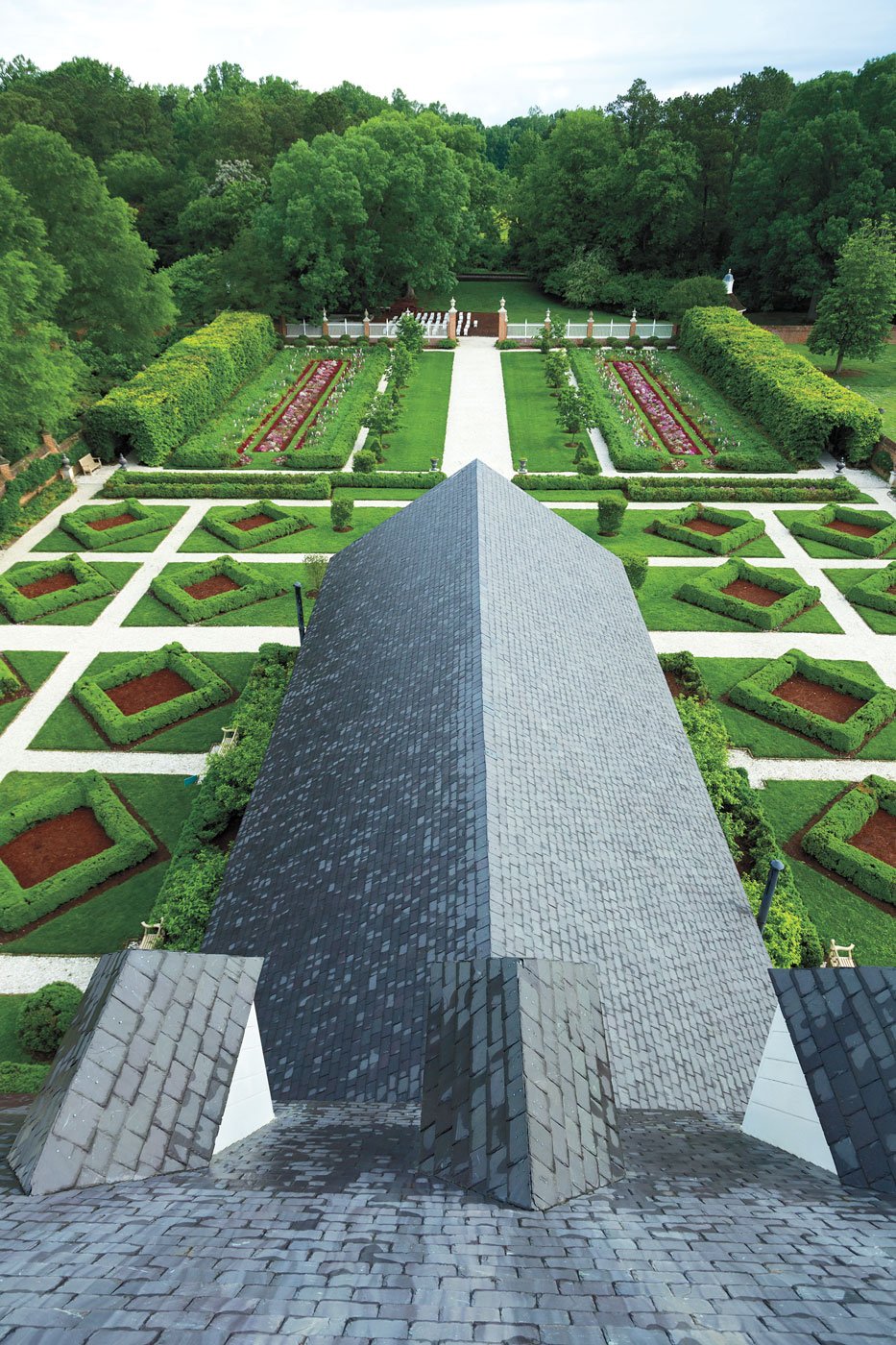
The Gardeners Dictionary
Master of Historic Gardening for the Colonial Williamsburg Foundation, Eve Otmar, shares more about a book that inspires her work.


Keep History Alive
Expanding Colonial Williamsburg’s farming and gardening trades — and adding a milling trade — broadens our knowledge of practices that have sustained human life for hundreds of generations and played a very large role in 18th-century Williamsburg.
Contact [email protected] to find out how you can support
